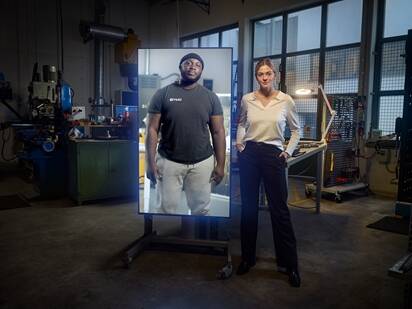When we bring these prompts to students, it introduces new ways of addressing the problem that we at Volvo probably haven’t considered yet.

Bringing power to electric machines beyond the grid - The future is electric
We at Volvo CE work tirelessly towards transforming our entire product offering to be fossil-free by 2040 – and an important part of this commitment is investing in the future of engineering through our academic programs and student collaborations. We hope to provide a springboard for students today to become part of an inspired workforce tomorrow, paving the path with new ways of thinking.
The Volvo CE participation in ME310 at Stanford University was created to nurture brilliant young minds in engineering that push the boundaries of traditional problem solving. The prompt presented to the students this time was ‘How to power electric construction machines beyond the electrical grid?’
Students Hedvig and Godson and their respective teams from BTH University (Sweden) and Stanford University (USA) go on an inspiring journey across continents – building the future from paper to prototype.
To solve the task assigned by Volvo - Hedvig, Godson and their teams created functional and portable prototypes named Nomad and Oasis. Oasis generates electricity using a wind turbine and solar panels, while Nomad distributes electricity to electric machines in remote areas with broken or non-existent electric infrastructure.
Watch this film and experience what drives changemakers like Hedvig and Godson and how Volvo CE helped in shaping their paths. Change Starts Here.
